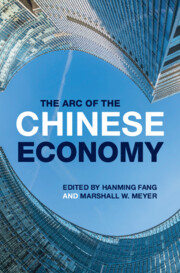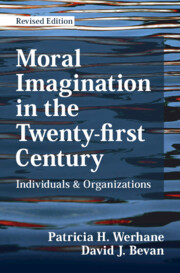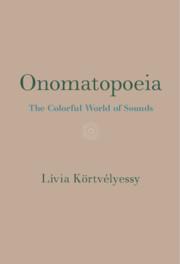Refine search
Actions for selected content:
3386667 results
7 - Wages
- from Part III - Statutory Regulation of the Employment Relationship
-
- Book:
- Labour Law
- Published online:
- 02 October 2025
- Print publication:
- 31 October 2025, pp 245-283
-
- Chapter
- Export citation
14 - The Right to Bargain Collectively
- from Part IV - Collective Labour Rights
-
- Book:
- Labour Law
- Published online:
- 02 October 2025
- Print publication:
- 31 October 2025, pp 566-629
-
- Chapter
- Export citation

Distant Friends and Intimate Enemies
- A History of American-Russian Relations
- Coming soon
-
- Expected online publication date:
- October 2025
- Print publication:
- 20 November 2025
-
- Book
- Export citation
1 - ‘The principal ingredient necessary to form a good planter’: Education and the Making of a Transatlantic Elite
-
- Book:
- The University of Cambridge in the Age of Atlantic Slavery
- Published online:
- 12 September 2025
- Print publication:
- 30 October 2025, pp 19-48
-
- Chapter
-
- You have access
- Open access
- HTML
- Export citation

Advances in Economics and Econometrics
- Twelfth World Congress
- Coming soon
-
- Expected online publication date:
- October 2025
- Print publication:
- 31 October 2025
-
- Book
- Export citation
4 - ‘Several University Gentlemen, who have quite altered their Tone’: The Problem of the British Slave Trade
-
- Book:
- The University of Cambridge in the Age of Atlantic Slavery
- Published online:
- 12 September 2025
- Print publication:
- 30 October 2025, pp 104-137
-
- Chapter
-
- You have access
- Open access
- HTML
- Export citation

The Arc of the Chinese Economy
- Coming soon
-
- Expected online publication date:
- October 2025
- Print publication:
- 31 October 2025
-
- Book
- Export citation

Moral Imagination in the Twenty-first Century
- Individuals and Organizations
- Coming soon
-
- Expected online publication date:
- October 2025
- Print publication:
- 31 October 2025
-
- Book
- Export citation

The Cambridge Handbook of the Governance of Technology
- Coming soon
-
- Expected online publication date:
- October 2025
- Print publication:
- 31 October 2025
-
- Book
- Export citation
Conclusion
-
- Book:
- The University of Cambridge in the Age of Atlantic Slavery
- Published online:
- 12 September 2025
- Print publication:
- 30 October 2025, pp 202-205
-
- Chapter
-
- You have access
- Open access
- HTML
- Export citation
Tables
-
- Book:
- The University of Cambridge in the Age of Atlantic Slavery
- Published online:
- 12 September 2025
- Print publication:
- 30 October 2025, pp vii-vii
-
- Chapter
-
- You have access
- Open access
- HTML
- Export citation

Discourse, Materiality and Agency within Everyday Social Interactions
- Coming soon
-
- Expected online publication date:
- October 2025
- Print publication:
- 31 December 2025
-
- Element
- Export citation
2 - ‘The Highe Priest hath banished you forth’: Missionary Protestantism and the Origins of the British Empire
-
- Book:
- The University of Cambridge in the Age of Atlantic Slavery
- Published online:
- 12 September 2025
- Print publication:
- 30 October 2025, pp 49-75
-
- Chapter
-
- You have access
- Open access
- HTML
- Export citation

Advances in Economics and Econometrics
- Twelfth World Congress
- Coming soon
-
- Expected online publication date:
- October 2025
- Print publication:
- 31 October 2025
-
- Book
- Export citation

Onomatopoeia
- The Colorful World of Sounds
- Coming soon
-
- Expected online publication date:
- October 2025
- Print publication:
- 31 October 2025
-
- Book
- Export citation
Copyright page
-
- Book:
- The University of Cambridge in the Age of Atlantic Slavery
- Published online:
- 12 September 2025
- Print publication:
- 30 October 2025, pp iv-iv
-
- Chapter
-
- You have access
- Open access
- HTML
- Export citation
Figures
-
- Book:
- The University of Cambridge in the Age of Atlantic Slavery
- Published online:
- 12 September 2025
- Print publication:
- 30 October 2025, pp vi-vi
-
- Chapter
-
- You have access
- Open access
- HTML
- Export citation
Notes
-
- Book:
- The University of Cambridge in the Age of Atlantic Slavery
- Published online:
- 12 September 2025
- Print publication:
- 30 October 2025, pp 210-293
-
- Chapter
-
- You have access
- Open access
- HTML
- Export citation
Bibliography
-
- Book:
- The University of Cambridge in the Age of Atlantic Slavery
- Published online:
- 12 September 2025
- Print publication:
- 30 October 2025, pp 294-370
-
- Chapter
-
- You have access
- Open access
- HTML
- Export citation

The WTO Agreements
- The Marrakesh Agreement Establishing the World Trade Organization and its Annexes (New Edition)
- Coming soon
-
- Expected online publication date:
- October 2025
- Print publication:
- 31 October 2025
-
- Book
- Export citation
